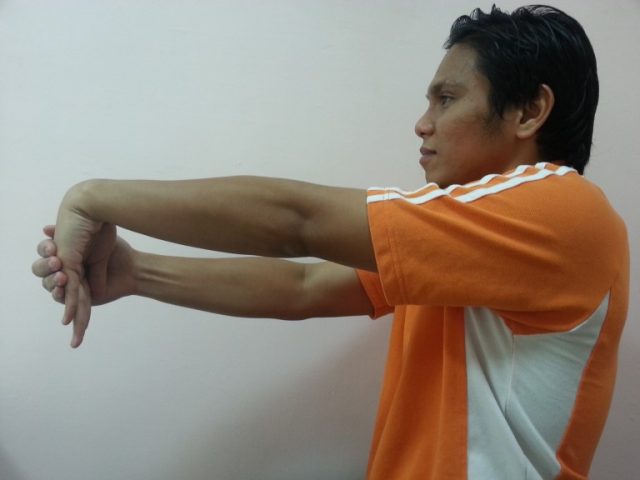5 TREATMENTS FOR CARPAL TUNNEL SYNDROME IN MALAYSIA I SOUTHERN CRESCENT
5 TREATMENTS FOR CARPAL TUNNEL SYNDROME IN MALAYSIA I SOUTHERN CRESCENT

Ever experience tingling and numbness in your palm, thumb, or first two fingers? Some say they feel an aching pain in the wrist and hand that occasionally shoots up to the forearm. You might also have trouble gripping or holding objects due to weakness in your thumb. If you’re dealing with these symptoms, one likely culprit is a condition known as carpal tunnel syndrome.
Carpal tunnel syndrome has a prevalence of 20%-60% in Malaysia. It happens when the carpal tunnel inside your wrist swells and squeezes your median nerve. This condition normally develops between the ages of 45 and 64 years and women are three times more likely than men to get it. The high-risk population includes workers with repetitive motion of hand and wrist like typists, have arthritic disease, obese patients and pregnant women.
Untreated carpal tunnel syndrome can have a negative impact on your quality of life. Here are the top five treatments to help with the pain:
1. REST IT
If repetitive motion is causing your symptoms, take breaks more often or do a bit less of the activity that is causing you pain. The more rest your hand and wrist get, the greater the chance for relieving the symptoms. It is best to stop or cut down on anything that requires you to frequently bend your wrist or grip hard such as playing an instrument.
Since the pain is caused by inflammation of your carpal tunnel, ice is a perfect first line of defense to reduce the swelling. Place an ice pack on the wrist to help when the problem flares up, but remember to not apply ice directly onto the skin. You may wrap a towel around a plastic bag filled with crushed ice or around a frozen water bottle.
2. STRETCH IT
Physical therapy can make you feel better. However, when you try these stretches for carpal tunnel syndrome, remember to not overdo it. If it hurts, take a break. If you push it, you might make your symptoms much worse. Start slow and see how it goes. These are three basic moves you can do any time of day:
- Prayer stretch: Start with your palms together in front of your chest just below your chin. Slowly lower your hands toward your waistline, keeping your hands close to your stomach and your palms together until you feel a mild to moderate stretch under your forearms. Hold it for 15 to 30 seconds. Repeat 2 to 4 times.
- Wrist flexor stretch: Extend your arm in front of you with your palm up. Bend your wrist, pointing your hand toward the floor. With your other hand, gently bend your wrist farther until you feel a mild to moderate stretch in your forearm. Hold for 15 to 30 seconds and repeat 2 to 4 times.
- Wrist extensor stretch: Repeat steps for the stretch above, but begin with your extended hand palm down.

3. SPLINT IT
A wrist splint is something you wear on your hand to keep your wrist from moving and helps relieve pressure on the nerve. It can be worn at night to give you better sleep and rest your median nerve. A good wrist splint with high-quality material like this can help get rid of the numbness or tingling feeling. You will have to wear a splint for at least 4 weeks before you can feel the improvement.
4. MEDICATE IT
When your carpal tunnel syndrome is at its worst, you can reach for some quick relief in the form of nonsteroidal anti-inflammatory drugs (NSAIDs) such as aspirin and ibuprofen. Used in moderation, these medications can provide short-term relief from discomfort and help you get on with your day.
If your pain is severe or doesn’t respond to prescribed NSAIDs, your doctor may advise you to have a cortisone injection. The steroid is injected directly into your wrist to relieve pressure on the median nerve. This injection may help ease your pain for about a month or even longer than that.
5. CUT IT (NOT THE HAND, JUST THE LIGAMENT)
If none of these treatments works, you might have a surgery called carpal tunnel release. This procedure helps to increase the size of the tunnel and eases the pressure on your median nerve by severing the ligament around the wrist. It is usually done under local or regional anesthesia and does not require an overnight hospital stay.
The surgeon will make one or two incisions in the wrist and palm and cut the carpal ligament to enlarge the carpal tunnel. Following the surgery, the ligaments usually grow back together and allow more space than before. Although symptoms may be relieved immediately after surgery, full recovery from carpal tunnel surgery can take months.
Ready to kick start your treatment? Get a FREE CONSULTATION on medical products that are suitable for your condition today. Share this good news with your friends and family as well!
At Southern Crescent, we offer a comprehensive range of orthotic products that will suit your needs.
For any inquiries, email us at info@southerncrescent.com.my or fill out this form.
Alternatively, you can also contact us directly at 019-919 9334




